Mining the Miners: A small exhibition about a lot of money
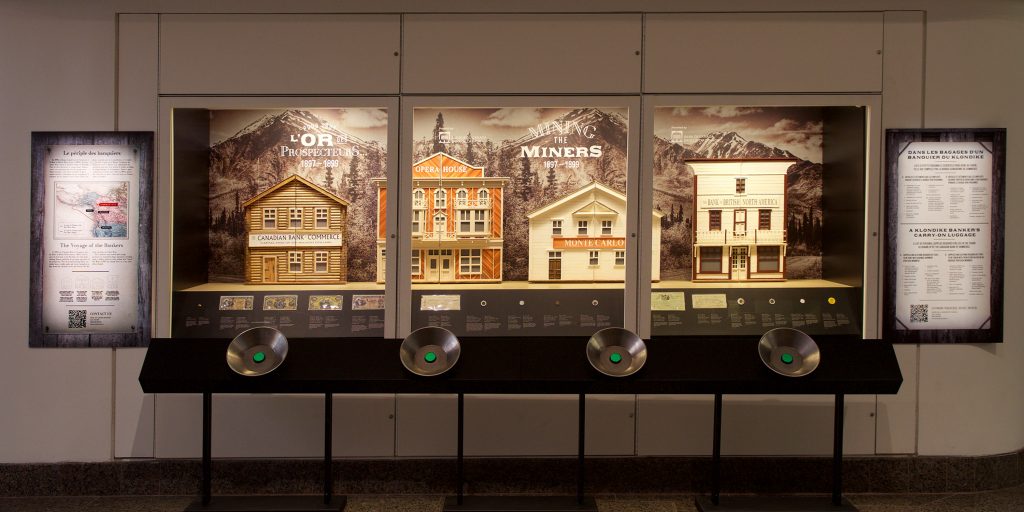
The window is just the right size for a display like this. Photo: Bank of Canada Museum
The Canadian Museum of History is committed to ensuring that the history of Canada and its peoples is accessible, comprehensive and communicated in a way that allows Canadians to feel connected to the events, experiences, peoples and objects that have shaped our history. The Museum achieves this in part by regularly presenting special exhibitions and displays from a variety of Canadian cultural institutions. We are currently showing a display about the Klondike gold rush from the Bank of Canada Museum. For this latest blog post, we invited Graham Iddon, Writer for the Bank of Canada Museum, to share some insights about this special display.
While closed for renovations, the Bank of Canada Museum has no physical space to show its exhibitions. To keep the doors open, so to speak, we have been producing exhibitions to be shown in host institutions. For the past three years, the Canadian Museum of History has been kind enough to put us up while our house is being renovated, providing us with a large display case on the lower level. In June 2016, we opened our third display — Mining the Miners.
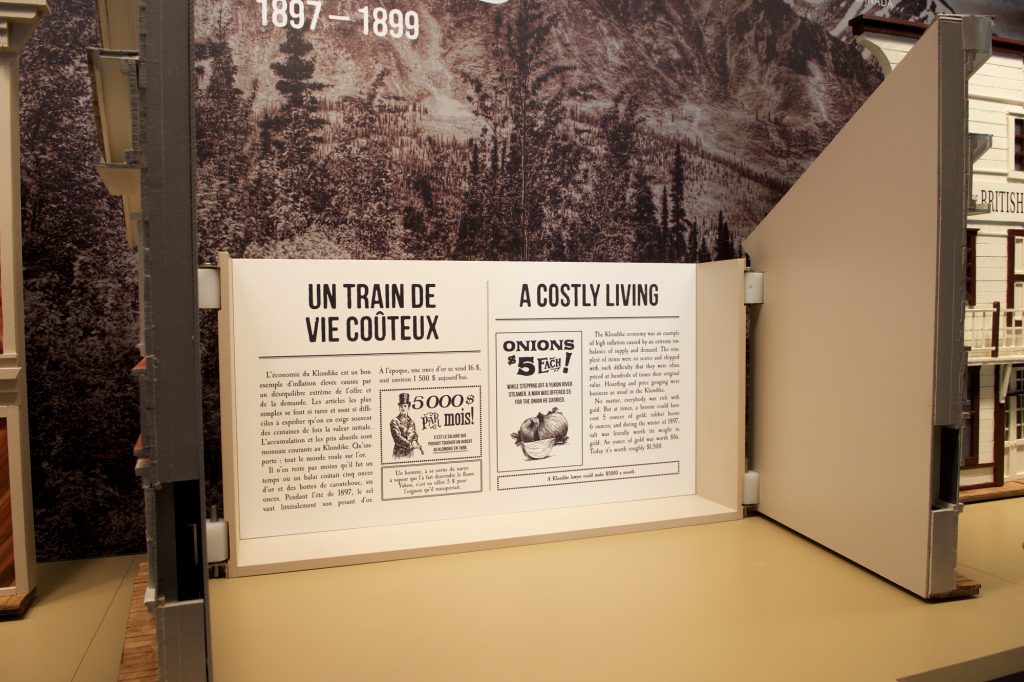
When you press a button, the building opens up to reveal its content. Don’t worry, each description is only 80 words; bilingual panels always look a little overwhelming. Photo: Bank of Canada Museum
This special display features the Klondike gold rush. But it’s not about the prospecting, the mining, or even the gold itself. We left that to the exhibition Gold Rush! ‒ El Dorado in British Columbia. Instead, Mining the Miners is about the secondary aspects of a gold rush — in this case, the extraordinary Klondike economy and the two banks that competed for business there.
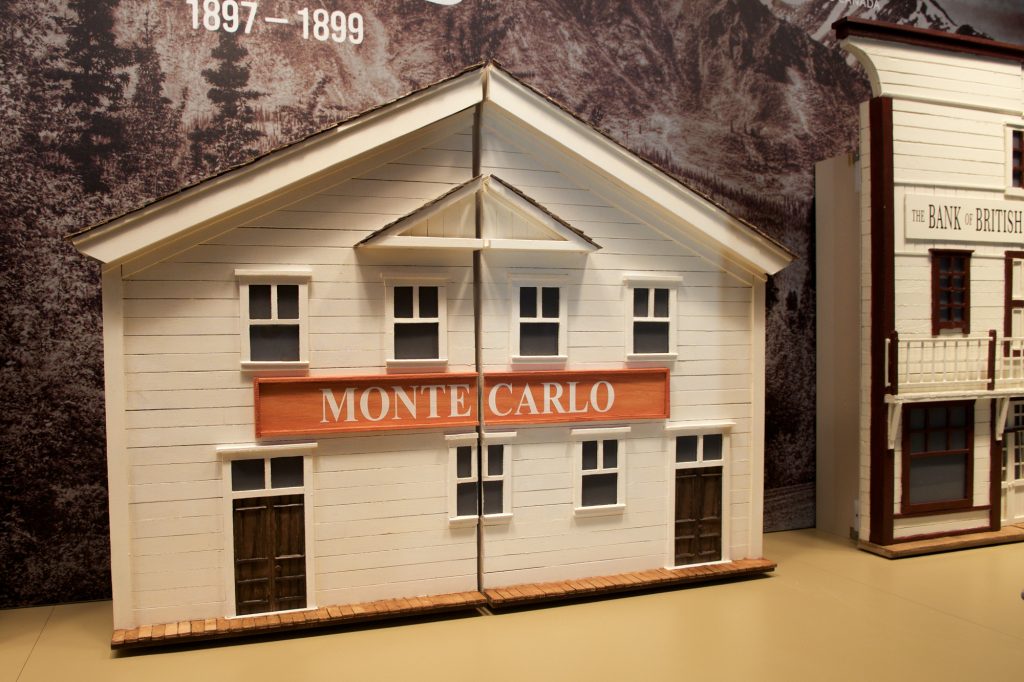
All these building models were based on real gold rush era buildings from Dawson City. The Monte Carlo still exists, but it’s in a different building now.
It’s a surprisingly fun subject, full of anecdotes about the combination of greed, obsession and hardship that was the Klondike gold rush. Mining the Miners tells the tale of the adventures involved in setting up a bank in the remote Yukon interior, and the unique challenges the staff faced operating in a wild frontier town where the rule of law didn’t always apply. In that extraordinary era of history, bartering was common and supplies were scarce; there were times when salt was worth its weight in gold. The cost of living is an ever-present subject that permeates the entire display, which also explores who made the real money during the Klondike gold rush.
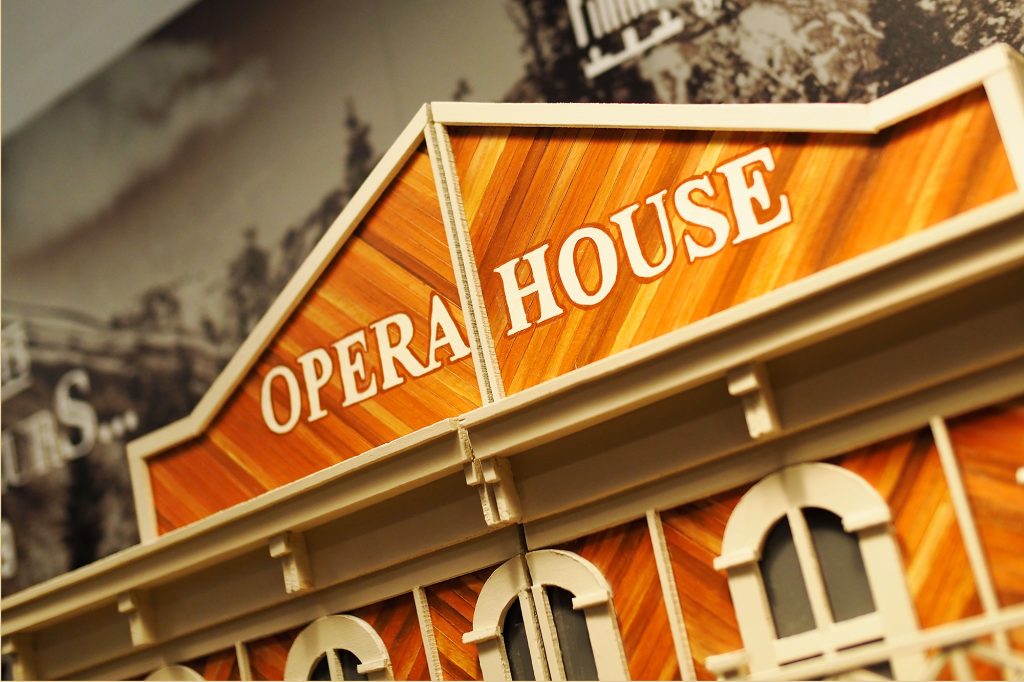
The features of the building show great attention to detail. This building still stands and is now the Palace Grand Theatre. Photo: Bank of Canada Museum
Every place and time — even a barter economy — has its own requirements for money. The National Currency Collection is home to coins, cheques, bank notes and tokens specific to the Klondike gold rush. Bank notes stamped with “Yukon” and “Dawson” are displayed alongside promotional tokens from dance halls, saloons and small businesses. Such tokens were used in exchange for purchases in a marketplace where few coins existed. In fact, until the banks came to Dawson, the common currency of the Klondike was gold dust.
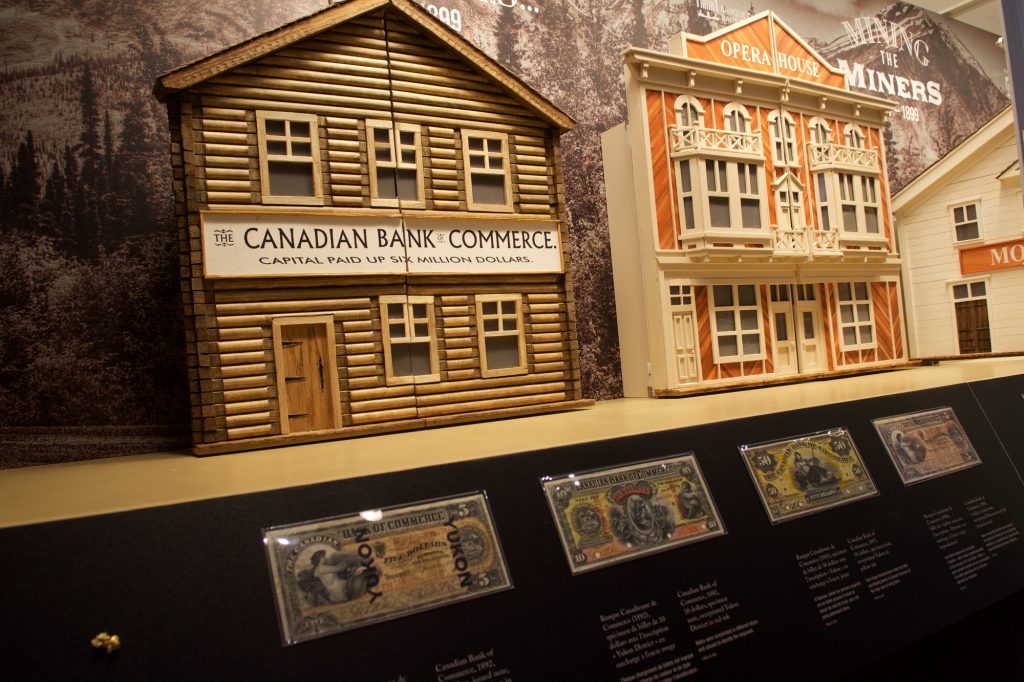
These bank notes from our collection were all specially marked for use in the Klondike during the gold rush. Photo: Bank of Canada Museum
If you’re planning to drop by the Museum to see Gold Rush! ‒ El Dorado in British Columbia, take a small detour and check out Mining the Miners, located just beside the Canadian Stamp Collection.